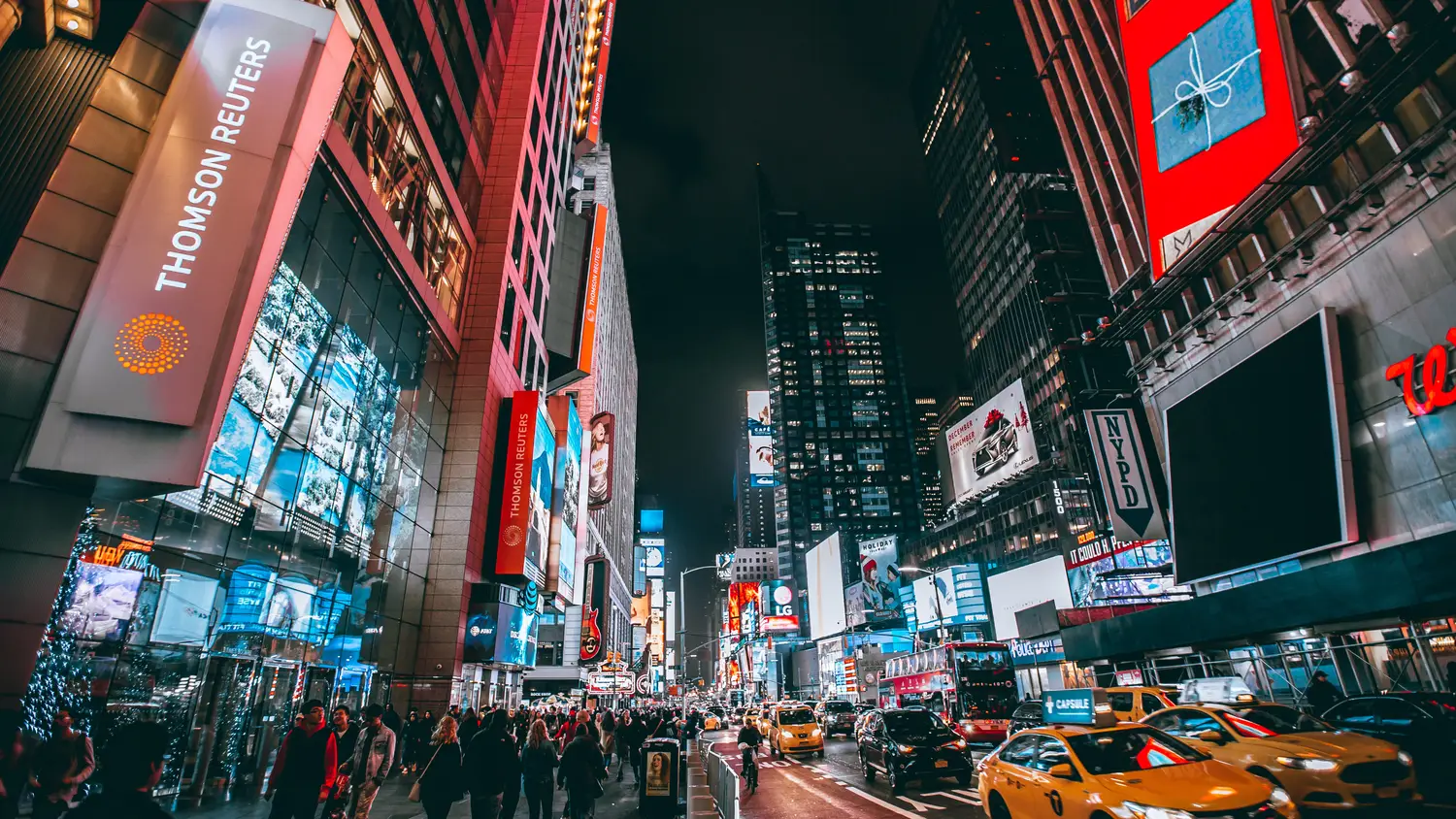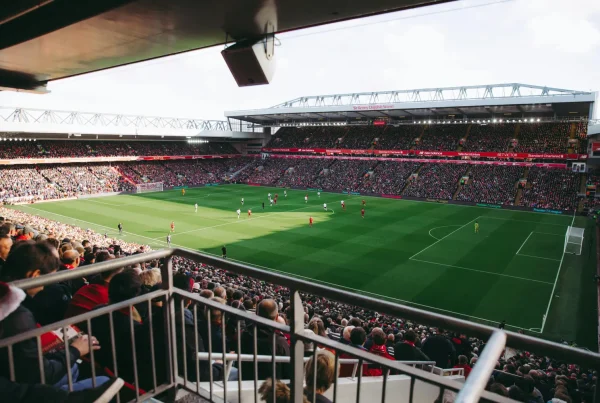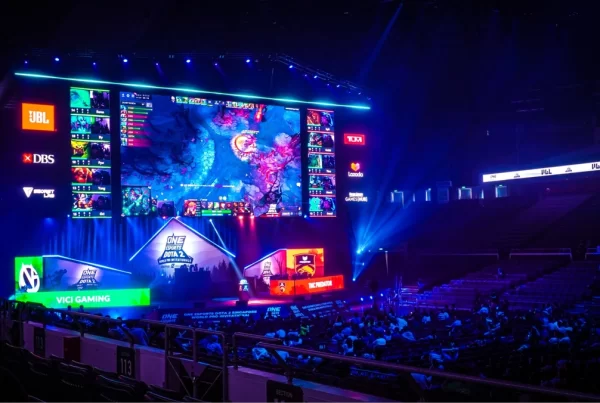The future of LED signs
From streetside billboards to small displays at corporate events, LED signs have transformed the way we convey information and advertise products. Now, with new advancements on the horizon, LED signs are poised to bring even greater changes.
Join us as we explore the future of LED signage tech. Let’s first begin with a quick look back at the origin of LED signs to better understand where the technology is headed.
» MORE: YAHAM’s LED signage products
When were LED signs first made?
The first light-emitting diode (LED) capable of producing visible light was invented in 1962 by Nick Holonyack, a General Electric consulting engineer. It wasn’t, however, until the 70s that LED signs began to popularize.
What were early LED signs like?
The first LED signs were extremely simple and often monochromatic, usually in shades of red or green, due to the limitations of early LED technology. Their designs mostly displayed static messages or very simple animations.
As LED technology evolved, so did the capacity for more intricate displays. By the late 70s and early 80s, LED signs had multi-colored displays, providing businesses with more diverse and eye-catching advertising options.
Early LED signs vs. modern LED signs
Modern LED signs outrange their predecessors, offering greater brightness, efficiency, resolution, versatility, and durability. Moreover, contemporary LED signs allow for integration into smart systems, such as cloud-based CMSs.
Brightness
Today’s LEDs handle more power and stay brighter for longer than their predecessors. This is due to improvements in semiconductor materials, better heat dissipation techniques, and optimized designs that minimize performance degradation.
Furthermore, advancements in phosphor technology and chip design have enabled LED signs to produce a broader spectrum of colors with higher color rendering indexes (CRI).
Regarding LED chip design:
To achieve a broader color spectrum and higher CRI values, LED signs utilize multi-chip designs, where each chip produces a different color. These colors are then combined to produce much higher display quality.
Energy efficiency
Modern LEDs can achieve 100+ lumens per watt, while the earliest LEDs struggled to reach even 10 lumens per watt.
Resolution
In the early days of LED technology, LED displays had limited pixel densities. This meant that the number of individual LEDs packed into a given space was quite sparse, resulting in displays that were blocky and pixelated.
As technology has advanced, the pixel density of LED displays has increased dramatically. Modern LED signs now boast a pixel-per-inch (PPI) count that rivals many of today’s top-tier smartphones and televisions. This allows for images and videos to be displayed with a clarity and sharpness that was previously unattainable for LED signs.
Versatility
Modern LED signs are more versatile than their earlier counterparts and can display vibrant colors and dynamic animations while adapting to various light conditions.
Furthermore, advanced materials and designs allow for flexible and transparent screens and integration with smart systems. This enables real-time content changes, audience interaction, and integration into diverse environments.
Durability
Outdoor LED signs face a variety of conditions, from humidity to inclement weather. This is why modern LED signs come with IP (Ingress Protection) ratings, which indicate their level of protection against dust, water, and other potential contaminants.
Advanced sealing techniques, corrosion-resistant materials, and temperature control mechanisms are used to ensure that today’s LED signs remain functional even in extreme weather conditions.
Older LED signs didn’t always have the same protective features. Their casings might have been susceptible to water infiltration, and they didn’t necessarily have the advanced thermal management systems seen in modern designs.
» MORE: YAHAM’s high-quality interior and exterior digital displays
The future of LED signs in the coming years
There are some big changes for LED signs already happening, while some are just around the corner. Here are the most significant changes.
Increased use of LED signs for various purposes
More businesses are using LED displays than ever before, and the demand has forced LED signage companies to adapt and create more versatile solutions. Nowadays, LED signs come in a wide variety of shapes and sizes and have an impressive range of features.
LED signs will be more interactive and include touchscreen
LED signs are no longer just static displays. They now offer self-service features, allowing users to access information, navigate directories, and even make on-screen purchases.
Here’s how LED signs are being made more interactive:
Touch screen integration: Some LED displays are equipped with touch-sensitive overlays, making them effectively large touch screen devices.
Motion sensors: LED signs with integrated motion sensors can detect a person’s movement or presence. This can trigger specific content to be displayed or even allow gesture-based interactions.
Mobile integration: QR codes or NFC tags can be displayed on LED signs, allowing users to access related content on their smartphones. Additionally, some businesses have started to develop dedicated mobile apps that allow users to interact with content displayed on LED screens.
Interactive games: Some LED displays are set up to allow interactive games. Players might use touch, gesture, or mobile devices to interact with the game shown on the LED screen.
Voice interaction: Integrating voice recognition systems can make LED signs responsive to voice commands, enabling users to request specific information or control the display.
LED signs will likely use cameras and facial recognition
In a crowded setting, an LED sign with facial recognition technology can assess the overall demographic of the crowd and present content that appeals to the majority.
Naturally, such capabilities do raise concerns about personal privacy and data security. For this reason and others, the future of facial recognition in LED signs and the laws surrounding its use are uncertain.
LED signs will utilize Augmented Reality technology
The integration of Augmented Reality (AR) with LED signs promises a transformative user experience. For example, shoppers at a retail store will eventually be able to point their phones at an LED screen with clothes on display and instantly see how those clothes would look on them.
Additionally, 3D product interactions will allow customers to explore a product’s features in a virtual space before making a purchase.
These are just two of many examples.
LED signs will use real-time data for fast updates
Modern LED signs, especially those that are part of a larger digital signage system, can be integrated with various software platforms through APIs. This allows these LED displays to pull in real-time data and dynamically display relevant information.
The information that can be displayed includes schedules, customer testimonials, product demos, inventory levels, and more. Furthermore, IoT (Internet of Things) integrations mean these signs can pull data from a wide array of sensors and devices. For instance, a digital sign in a clothing store might adjust its display based on the current weather, promoting raincoats during a downpour or sunglasses on a sunny day.
For restaurants, integration with POS (Point of Sale) systems can mean showing menu items that are particularly popular that day or perhaps flashing a special offer when the kitchen has an overstock of a certain dish.
LED signs will be used more frequently for live-streaming
LED signs are already being used for live-streaming in certain settings, such as concerts, gaming events, and corporate seminars. As long as the sign’s controller supports the necessary input, live streaming is feasible.
Software solutions are also available that allow streamed content to be pushed directly to LED displays.
LED signs will employ programmatic advertising
Programmatic advertising uses AI software to automatically buy ad space, replacing traditional human-negotiated contracts. This means that LED signs will be able to change their messaging quickly, based on immediate needs, avoiding the manual delays of older systems.
Note that while programmatic advertising is the use of automation in the buying of ad space, and while AI is often a part of this, not all programmatic advertising uses AI.
More LED signs may have curved and flexible displays
Curved and flexible displays offer businesses certain advantages over traditional flat screens.
Here are the advantages of curved LED signs:
- More immersive experience
- Increased versatility
- Adaptability to irregular surfaces
- Enhanced viewing angles
- Aesthetic appeal
- Reduced glare and reflections
- Optimized content presentation
Given these advantages and the increasing use of LED signs, the number of curved LED displays is likely to increase in the future.
» MORE: Modern displays: 10 mind-blowing facts about Ultra High Definition
More about LED signs with touchscreen capability
A common method to make an LED display touch-sensitive is by adding a touchscreen overlay. However, some modern LED displays are manufactured with integrated touch capabilities, eliminating the need for an external overlay.
LED signs with touchscreen capabilities: What can they do?
Interactive content navigation:
- Browse through information at your own pace.
- Access detailed product descriptions or services.
Engaging multimedia display:
- Play videos, animations, or slideshows with just a touch.
- Allow users to enlarge images or rotate 3D models.
Multi-Touch Gestures:
- Pinch to zoom in or out.
- Rotate or swipe to navigate between content.
Haptic Feedback:
- Provides tactile responses to touch, enhancing user interaction.
- Simulate real-world touch sensations, making interactions more intuitive.
Real-time Adjustments with Sensors:
- Motion sensors can trigger specific content when movement is detected.
- Ambient light sensors adjust screen brightness based on surrounding light conditions.
Interactive Gaming or Quizzes:
- Engage users with touch-based games or quizzes, often seen in malls or waiting areas.
Immediate Purchases or Bookings:
- In retail or service-oriented spaces, users can instantly book services or buy products directly from the screen.
» MORE: Create a one-of-a-kind experience with an LED video wall
Contact YAHAM
YAHAM is a global leader in signage solutions. We’ve been in operation for 25+ years and offer comprehensive services, including design, manufacturing, management, and content creation.
YAHAM has completed over 50,000 successful installs in 112 countries.
Are you ready to improve your business with LED signage? Contact us today for a quote.




